Android Central Verdict
Bottom line: The POCO F2 Pro offers everything you're looking for in a phone. It has a gorgeous metal-and-glass design, is powered by the Snapdragon 865, and there's even a pop-up camera slider that leads to an all-screen display. The 4700mAh battery delivers outstanding battery life, you get a 3.5mm jack, and the value on offer here is incredible.
Pros
- +
Snapdragon 865 with 5G connectivity
- +
Gorgeous design
- +
Vibrant AMOLED panel
- +
Incredible battery life
- +
Retractable front camera module
- +
3.5mm jack
Cons
- -
60Hz refresh rate
- -
No wireless charging
- -
No water resistance
- -
Limited to select markets
Why you can trust Android Central
The market for value flagships is growing, and today in our POCO F2 Pro review, we're exploring another entry that could be one of the best yet. POCO transformed the value segment with the F1 back in 2018. The value on offer made it stand out from other value flagships, and the phone itself is still going strong in 2020. Following its trailblazing debut, POCO was relatively quiet for 18 months, with the only other device coming out of the brand being the X2. But with that device aimed at the budget segment, it wasn't the value flagship that POCO fans were waiting for.
With the POCO F2 Pro, we now have a true successor to the F1. The phone shares the same core tenets — uncompromising hardware and great value — but this time, you also get a gorgeous design, a vivid AMOLED panel, Snapdragon 865 chipset, retractable camera module, and a massive 4700mAh battery with 30W wired charging. The F2 Pro doesn't debut at the insane $300 price point as its predecessor, but at $500, it's still affordable in the context of the value flagships in 2020.
Having said that, the POCO F2 Pro is a rebranded version of the Redmi K30 Pro aimed at global markets. POCO's strategy this year is to stand out on the software side of things, so the hardware itself has been co-opted from Redmi. The POCO X2 is a rebrand of the Redmi K30, and the M2 Pro is the Redmi Note 9 in another guise. However, that doesn't minimize what POCO is trying to achieve here with the F2 Pro, and with the phone now available in select global markets for the equivalent of $500, let's see what it has to offer.
POCO F2 Pro Design

The POCO F1 had what can only be called a basic design, but that's not the case with the F2 Pro. The fit and finish that you get here are on par with true flagships, and like most phones in 2020, the F2 Pro has a metal-and-glass design with subtle curves and rounded edges.
The POCO F2 Pro has a gorgeous design with a pop-up camera slider and 3.5mm headphone jack.
Both the front and rear panes of glass are covered by Gorilla Glass 5, and the back has a frosted glass finish that makes the phone feel premium. The matte texture also makes it easier to hold the phone, and it does a great job hiding fingerprint smudges. The sides at the back curve gently where they meet the mid-frame, leading to a better in-hand feel.
The F2 Pro is available in Cyber Gray, Phantom White, Neon Blue, and Electric Purple color options, and the grey model that I'm using has an understated quality to it that works to its advantage. The aluminum mid-frame adds rigidity to the phone, and overall, the F2 Pro feels much more upmarket than its price tag would suggest.
The highlight on the design side of things is the lack of a cutout up front, with the F2 Pro featuring a retractable module for the front camera instead. That means you get an all-screen front without any cutouts to mar the experience, allowing the F2 Pro to stand out in this area. The slider itself doesn't take too long to engage, and it has LEDs on either side for better selfies in low-light conditions.
Get the latest news from Android Central, your trusted companion in the world of Android
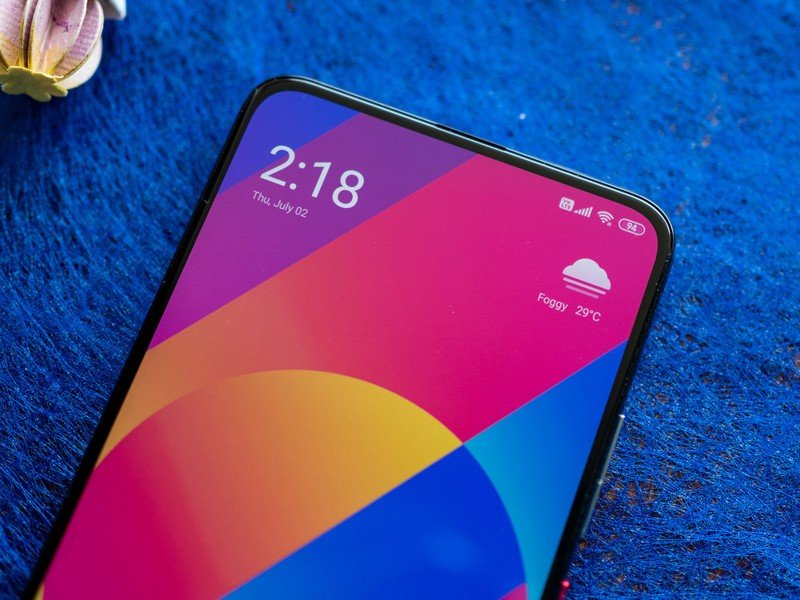
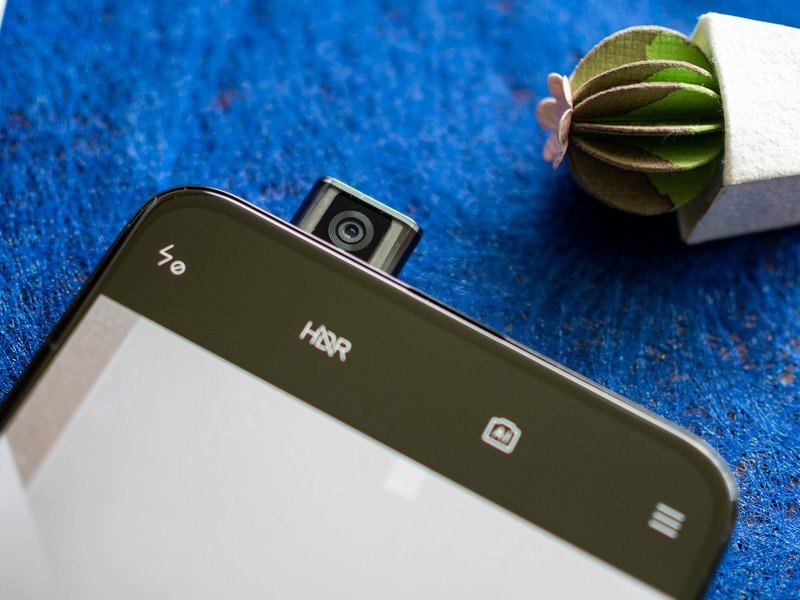




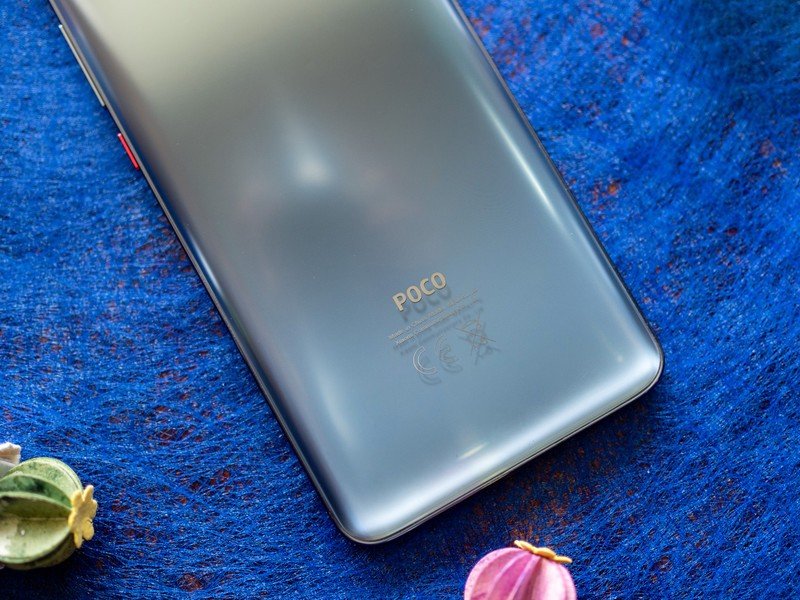


Oh, and another standout is the inclusion of the 3.5mm jack. It's located at the top next to the pop-up mechanism and the IR blaster, and it's great to see POCO retaining the feature. The phone has the power and volume buttons on the right, and there's added visual flair with the power button, which is coated red. You'll find the solitary speaker at the bottom to the left of the USB-C charging port, with the SIM card tray sitting to the right.
The F2 Pro has a distinctive camera housing at the back, with the four modules arrayed in a circle. The modules themselves don't protrude too much from the chassis of the phone, meaning there's no wobble when you use it on a flat surface.
At 219g, the F2 Pro is one of the heaviest phones on the market today. That's in part to the massive 4700mAh battery, and it's safe to assume that the retractable camera housing and the aluminum chassis also contributed to the weight. For what it's worth, the weight is distributed perfectly across the chassis, and you don't notice the heft with a few days of usage.
The F2 Pro is one of the best-looking phones you'll find for under $500, and the sturdy build along with the industrial design makes the F2 Pro a standout option.
POCO F2 Pro Display
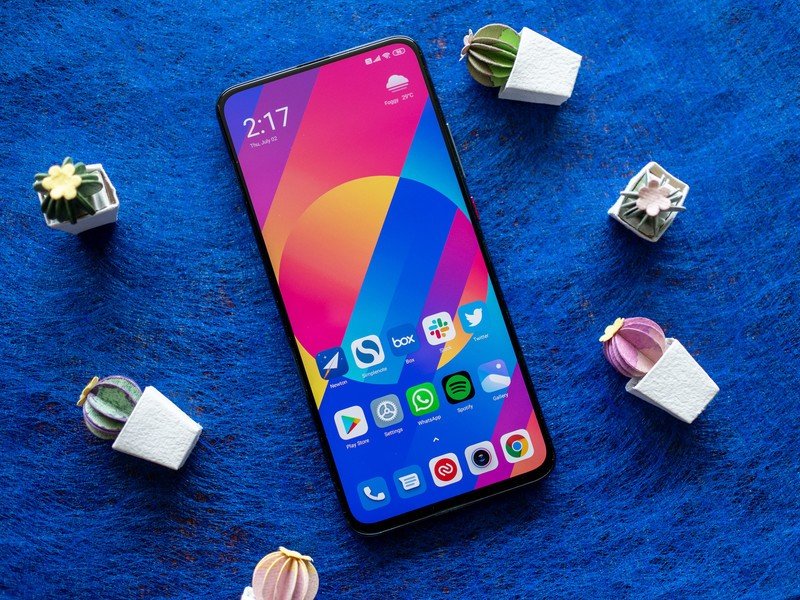
The F2 Pro has a massive 6.67-inch FHD+ (2400 x 1080) Super AMOLED display, and the highlight here is that there's no notch or cutout to mar the viewing experience. That's a big deal in 2020, and it gives the F2 Pro a distinct edge in this area.
There's no 90Hz display here, but the all-screen front delivers an immersive experience.
The notable omission with the F2 Pro is the lack of a 90Hz or 120Hz panel, and that is a letdown considering the device's strengths in other areas. The 60Hz panel is missing that level of immediacy that you get with the OnePlus 8 Pro, and using both phones next to each other, the difference was easily noticeable.
But if you're using a regular 60Hz screen and don't care about high refresh rate panels, there is a lot to like here. The screen has HDR10+, and you get vibrant colors with excellent visibility under sunlight. Colors are great out of the box, and you can also customize the color profile to your tastes.
You also get a blue light filter and a dedicated reading mode that switches the panel to warmer colors, and the biggest change here is the inclusion of an always-on display. You get to pick from two dozen clock styles and set a schedule for AOD, and the feature is ideal if you want to glance at incoming notifications and the time without having to wake the entire screen.
The lack of a cutout more than justifies the use of a 60Hz panel, and the F2 Pro is a delight to use for gaming and streaming videos. Ultimately, the all-screen design makes the F2 Pro one of the most distinctive phones of 2020. We've seen brands fall back to hole-punch cutouts this year, so it is great to see a device that offers that all-screen experience while still featuring the Snapdragon 865 chipset.
POCO F2 Pro Performance

POCO built its entire brand around value, and the F2 Pro continues that heritage. The phone is powered by the Snapdragon 865 chipset, and as a result, it is one of the fastest phones in the market today. With the unlocked global model selling on Amazon for just $425, the F2 Pro is one of the most affordable options if you're looking for a Snapdragon 865-powered phone.
| Specs | POCO F2 Pro |
|---|---|
| Software | MIUI 11, Android 10 |
| Display | 6.67-inch 60Hz AMOLED |
| Chipset | 2.84GHz Snapdragon 865 |
| RAM | 6GB/8GB |
| Storage | 128GB/256GB |
| Rear Camera 1 | 64MP ƒ/1.9 (primary) |
| Rear Camera 2 | 13MP ƒ/2.4 (wide-angle) |
| Rear Camera 3 | 5MP ƒ/2.2 (macro) |
| Rear Camera 4 | 2MP ƒ/2.4 (portrait) |
| Front Camera | 20MP ƒ/2.2 |
| Connectivity | Wi-Fi 6, BT 5.1, NFC |
| Battery | 4700mAh, 30W USB PD |
| Security | In-screen fingerprint |
| Colors | Grey, White, Blue |
| Dimensions | 163.3 x 75.4 x 8.9mm |
| Weight | 219g |
The Snapdragon 865 is a well-known quantity at this point, so I'm not going to spend too much time talking about it. The only thing you need to know is that the F2 Pro is rock-solid in day-to-day use. You won't find any lag or slowdowns, and it handles the most demanding of games with ease.
With the screen offering HDR10+, you can stream HDR content from Netflix and other sources, and the all-screen display is particularly well-suited for streaming videos. The only downside here is that the single speaker isn't quite as detailed as a stereo configuration, but you get the option to plug in wired earbuds or stream over Bluetooth.
You also get liquid cooling with the F2 Pro, with POCO noting that the phone has one of the biggest vapor chambers of any phone today. It didn't overheat during extended PUBG sessions, and the framerate was consistent throughout.
All things considered, there are no issues whatsoever when it comes to performance. The F2 Pro is available in two variants: a base variant with 6GB of LPDDR4X RAM and 128GB of storage, and a model with 8GB of LPDDR5 RAM and 256GB of storage. Both options come with UFS 3.1 storage as standard, and it's great to see POCO offering the latest modules with the phone.
There's also Wi-Fi 6 connectivity, along with Bluetooth 5.1 and NFC for Google Pay. You get AptX HD, AAC, and LDAC codecs for high-fidelity streaming over Bluetooth, and the F2 Pro has 5G connectivity over n77 and n78 bands. While 5G bands are limited, the phone has decent 4G connectivity: 1/2/3/4/5/7/8/20/28/38/40/41.
The in-screen optical sensor is fast and reliable, and there were no issues in this area. The haptic engine isn't as powerful as the one on the Mi 10 series, but it is much better than the motor that was included in the POCO F1.
Overall, the POCO F2 Pro is one of the fastest phones you'll find in the $500 segment. POCO hasn't missed out on any of the core features here, and the value on offer is astounding.
POCO F2 Pro Battery life

Combine a 60Hz FHD+ display with a massive 4700mAh battery, and you get a phone that delivers outstanding battery life. The F2 Pro easily delivers over a day's worth of use, and it's easy to make the device last two days on a full charge. You'll get anywhere between eight to nine hours of usage spread across the course of a day or two, and it's safe to say that the F2 Pro is the overall leader in this category.
There's good news on the charging front as well. The F2 Pro has 30W fast charging over USB Power Deliver 3.0, so you can just plug in any PD charger with the phone. The bundled 33W charger takes just over 65 minutes to fully charge the battery, and if battery life is a key consideration for you, the F2 Pro has everything you're looking for in a phone.
POCO F2 Pro Software

The POCO F2 Pro came with MIUI 11 based on Android 10 out of the box, and it received the update to MIUI 12 a few days ago. POCO has committed to delivering security updates at least once a quarter, and in general, there are a lot of positive changes with the customized MIUI for POCO user interface that's on offer here.
MIUI 12 is a step in the right direction for Xiaomi.
POCO introduced an app drawer on its phones two years ago, and the POCO Launcher has been the go-to option for those using Xiaomi and Redmi phones that wanted the feature. With MIUI 12, the same launcher is baked into the interface, so even if you're not using a POCO phone, you now get the app drawer.
An app drawer is just one of a dozen key changes in MIUI 12. Xiaomi has overhauled the privacy settings, making it easier for you to see when an app accesses your location or other data, and you can also automatically remove location data from photos. The system animations have been reworked and are smoother, you get navigation gestures based on Android 10, and there's a nifty floating windows feature that is similar to One UI.
There's also a Focus Mode — similar to OxygenOS' Zen Mode — and new optimizations to dark mode, an all-new Mi Share that lets you easily transfer files, and new backgrounds. MIUI 12 is the cleanest and most optimized version of MIUI yet, and having used the skin for over six years (I started out with MIUI 5 on the Nexus 4), I love the changes that Xiaomi introduced here. This is the first time Xiaomi's software is getting design tweaks aimed at a global audience, and it makes MIUI hold its own against its Chinese rivals.
POCO F2 Pro Cameras

Xiaomi has focused its attention on delivering great cameras across its portfolio this year, and the Mi 10 Pro takes some of the best photos of any device in the market today. With the F2 Pro, Xiaomi is leveraging an existing formula — the phone uses the same 64MP Sony IMX686 primary sensor as the POCO X2, and it's joined by a 13MP wide-angle lens with a 123-degree field-of-view, 5MP macro lens, and 2MP portrait module.
What's particularly interesting is that the POCO F2 Pro can shoot 8K footage at 24 or 30fps, and the latter is something that's unique to Xiaomi phones right now. Even Samsung's $1,300 Galaxy Note 20 Ultra is limited to 8K at 24fps, so if you are interested in trying out 8K video, the F2 Pro is a decent option. For more mainstream video modes, you get 4K at 60fps and slow-motion video that goes up to 960fps at 1080p.
The camera interface itself should be immediately familiar if you've used a Xiaomi phone in the past. All the modes and toggles are laid out in an easy-to-use format, and it's one of the better interfaces around.




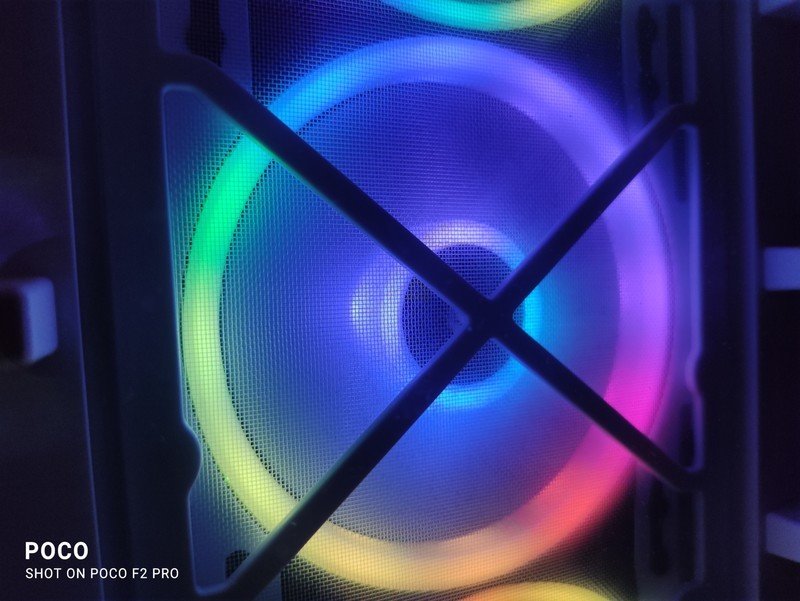



The POCO F2 Pro takes detailed shots with great dynamic range and vibrant colors in daylight scenarios. The camera holds up astonishingly well in low-light conditions as well, and while colors hue warmer, details are still preserved and the shots generally look great.
The main drawback with the F2 Pro is the auxiliary lenses. Shots from the wide-angle lens look muddy, and there's no detail even in well-lit conditions. The 5MP macro is similarly bad, as is the 2MP portrait lens. You are getting a great 64MP primary camera and a decent enough 20MP front camera, but the rest of the lenses aren't worth the effort.
POCO F2 Pro Competition
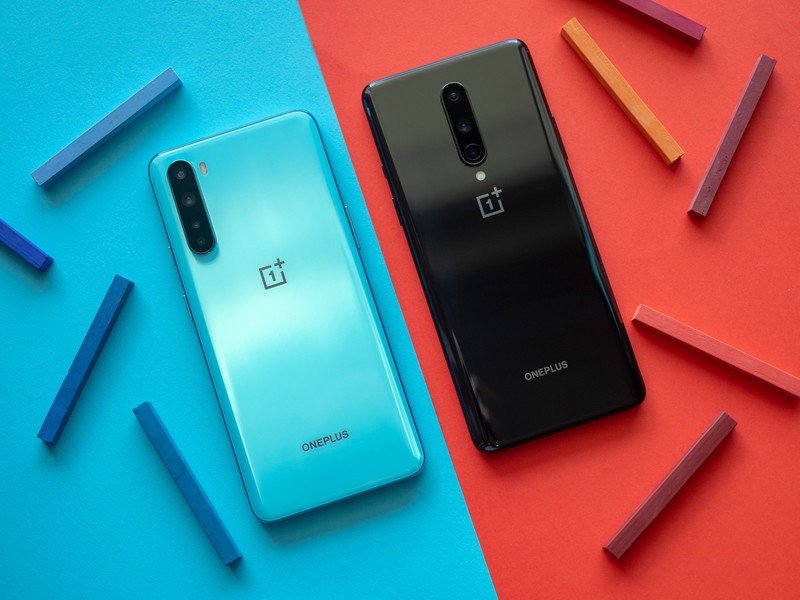
OnePlus dominates the value segment, and the $699 OnePlus 8 is the obvious challenger to the POCO F2 Pro. You get the same robust hardware, a 90Hz display, and cleaner software with fast updates. The F2 Pro has an all-screen front, you get a 3.5mm jack and a marginally better camera, and the fact that it's available for less than the OnePlus 8 gives it a serious edge.
If you're looking for the best camera in this category, then the $350 Pixel 4a is an easy recommendation. You get a flagship-class camera and three years of updates, and while the rest of the hardware doesn't quite measure up to the F2 Pro, the Pixel 4a nails the basics.
India is POCO's largest market by some margin, but the F2 Pro isn't launching in the country. The best alternative in this segment is the OnePlus Nord, which is available for ₹27,999 ($375) in the country. The Nord may not have the same level of hardware, but it is just as fast in day-to-day use, and it is available officially in India.
POCO F2 Pro Should you buy it?
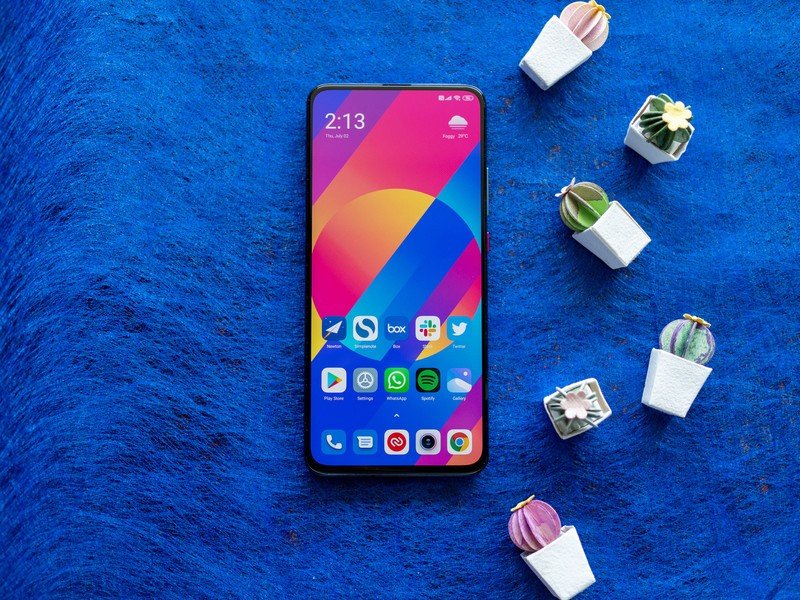
Who it's for
- Someone looking for the best battery life in this segment
- Those that want the Snapdragon 865 chipset for $500
- Anyone that wants an all-screen design not marred by a cutout
- Someone looking for a decent mid-range camera
Who it isn't for
- If you want a phone with a 90Hz or 120Hz screen
- If you need wireless charging or water resistance
The POCO F2 Pro costs several hundred dollars more than the F1, but then again, the rest of the industry has seen a similar hike in prices. The Note 20 Ultra starts at $1,300, so in that context, the POCO F2 Pro is an absolute steal at under $500.
For under $500, the POCO F2 Pro is an absolute steal.
The F2 Pro nails the basics: you get a gorgeous metal-and-glass design, and that all-screen display is a standout feature in 2020. The phone is packing the latest internal hardware, decent cameras that hold up well in most scenarios, and a vibrant AMOLED screen that is a delight to use for gaming or streaming videos. And the software itself is decent enough, with POCO adding meaningful features to MIUI 12.
But the key highlight is the battery life; with a 4700mAh battery and 30W fast charging, the POCO F2 Pro is a battery life champion. Yes, the phone is missing a few features: there's no high refresh rate panel, you won't find wireless charging or water resistance, and availability is limited to a few markets. But the pros outweigh the cons by a significant margin, and when you factor in the value you're getting here, the POCO F2 Pro is one of the best phones of 2020.
4 out of 5
The POCO F2 Pro is officially on sale in the UK for £499 ($655), but you can pick up the unlocked model on Amazon U.S. for just $425. You miss out on warranty, but for the hardware on offer, it's definitely worth the risk.

A truly outstanding phone
The POCO F2 Pro offers everything you're looking for in a phone. It has a gorgeous metal-and-glass design, is powered by the Snapdragon 865, and there's even a pop-up camera slider that leads to an all-screen display. The 4700mAh battery delivers outstanding battery life, you get a 3.5mm jack, and the value on offer here is incredible.

Harish Jonnalagadda is Android Central's Senior Editor overseeing mobile coverage. In his current role, he leads the site's coverage of Chinese phone brands, networking products, and AV gear. He has been testing phones for over a decade, and has extensive experience in mobile hardware and the global semiconductor industry. Contact him on Twitter at @chunkynerd.

